It was when I visited Johannesburg in 1991 that I first tried this wheatgrass juice. It has been one of my favorite juices ever since. At that time, a shot glass of this juice cost me a dollar. My first thought was, “mmm, pricy for a tiny shot,” but as soon as I tried it, I realized it was totally worth the price.
Some people might be apprehensive about consuming grass. Now, look at a cow, one of the gentlest creations of nature. You can see that it eats wild grass all day, has the energy to plow fields for hours, and produces a high amount of nutrition-rich milk. Cow’s milk is designed for baby cows, and in rural villages of India and some places in Asia, mothers often provide cow milk to help children grow and recover faster after server illness. Even lactating mothers, unable to breastfeed, they feed cow´s milk to their children—one of the primary reasons cows are treated as sacred, especially in India.
After my first experience, I enjoyed a daily shot of wheatgrass juice throughout my stay in Johannesburg. It felt like a healing magic potion. Beyond its power-packed nutrition, I loved its fragrance—sweet, organic, pure, and reminiscent of freshly cut lawn.
A little shot of this wheatgrass juice packs a punch of nutrients, offering higher quantities than most fruits and vegetables. When grown in organic soil, wheatgrass absorbs approximately 100 out of 102 minerals from the earth, which are essential for superb health. Like many natural foods, wheatgrass also possesses antioxidant, antibacterial, and anti-inflammatory properties. It contains essential micronutrients like vitamins A, C, E, and K, iron and magnesium vital for blood and brain function, 17 amino acids, and is one of the best organic sources of chlorophyll.
What is wheatgrass?
Scientifically known as Triticum aestivum, wheatgrass offers immense health benefits. Commonly consumed as a juice—and also available in powdered form—studies have shown that wheatgrass helps prevent and reverse many lifestyle diseases such as type 1 and type 2 diabetes. Try this fresh wheatgrass juice recipe daily as a health tonic to boost your immunity, eliminate toxins, enhance metabolism, and lower cholesterol levels.
Wheatgrass Juice
Nutritional Benefits of Wheatgrass Wheatgrass is a powerhouse of nutrients that support essential bodily functions. It is rich in 17 amino acids, B vitamins, vitamins A, C, E, and K, chlorophyll, enzymes, phytonutrients, and vital minerals such as magnesium, calcium, and iron. One of its key benefits is detoxification, thanks to its high chlorophyll content, which aids in eliminating toxins and supports liver function. The enzymes in wheatgrass promote healthy digestion by enhancing nutrient breakdown and absorption. Additionally, wheatgrass acts as a natural metabolism booster, making it beneficial for those looking to manage weight. It also helps strengthen immunity, lower bad cholesterol levels, and support cardiovascular health.
Ingredients
- 300g fresh wheatgrass, thoroughly rinsed
- 1 cup water
Instructions
Cut the wheatgrass as close to the root as possible. Rinse thoroughly and discard any yellow leaves.
Using a Juicer:
Place a small handful of wheatgrass into the juicer. If the juicer becomes jammed with pulp, remove the pulp manually and continue until all the juice is extracted.
Using a Blender:
Add the wheatgrass and water to a blending jar. Blend until you achieve a smooth liquid, ensuring the wheatgrass is completely broken down.
Pass the liquid through a cheesecloth or fine-mesh strainer, squeezing out every bit of juice from the pulp.
Serve immediately!
Nutrition
-
14.0 Calories
-
1.3g Carbohydrates
-
0.0mg Cholesterol
-
0.2g Fat
-
7.0g Fiber
-
1.8g Protein
-
0.1g Saturated fat
-
18.0mg Sodium
-
1g Sugar
-
0.0g Trans fat
Notes
You can refrigerate and store the juice for up to 1 week. However, for optimal nutritional benefits, it is best to consume it within 3 days, as prolonged storage may reduce its nutrient content.


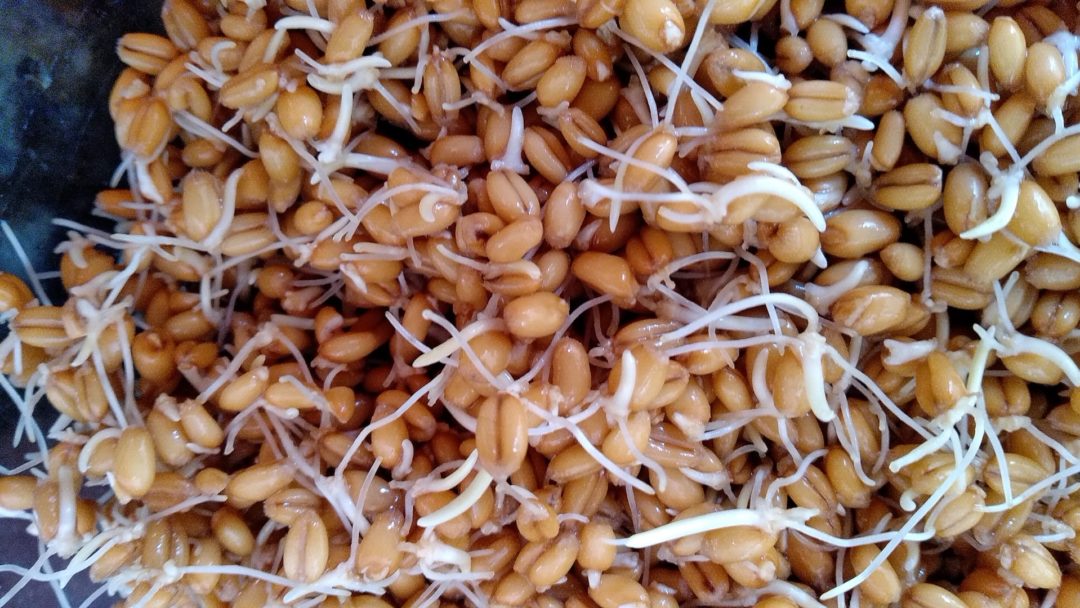

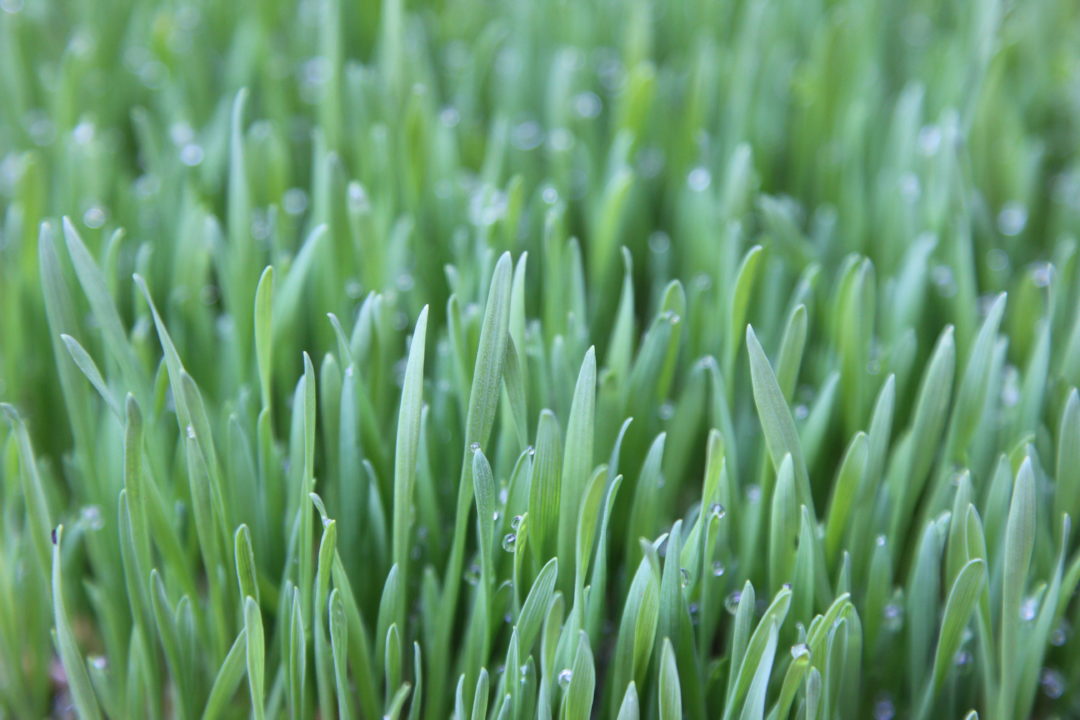

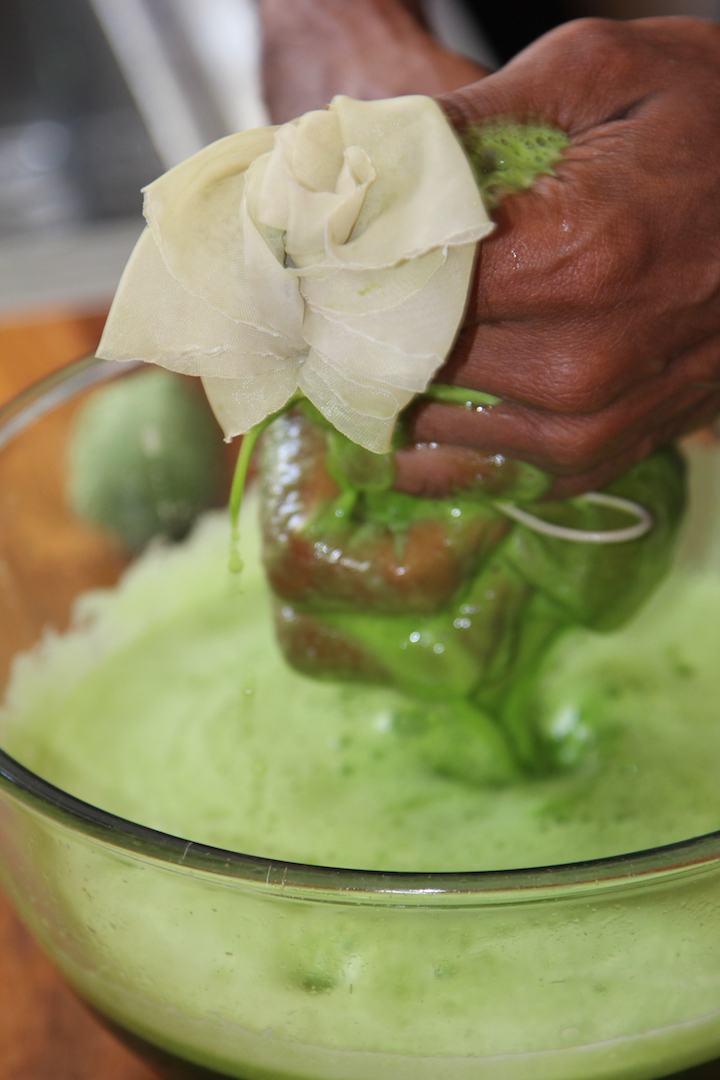
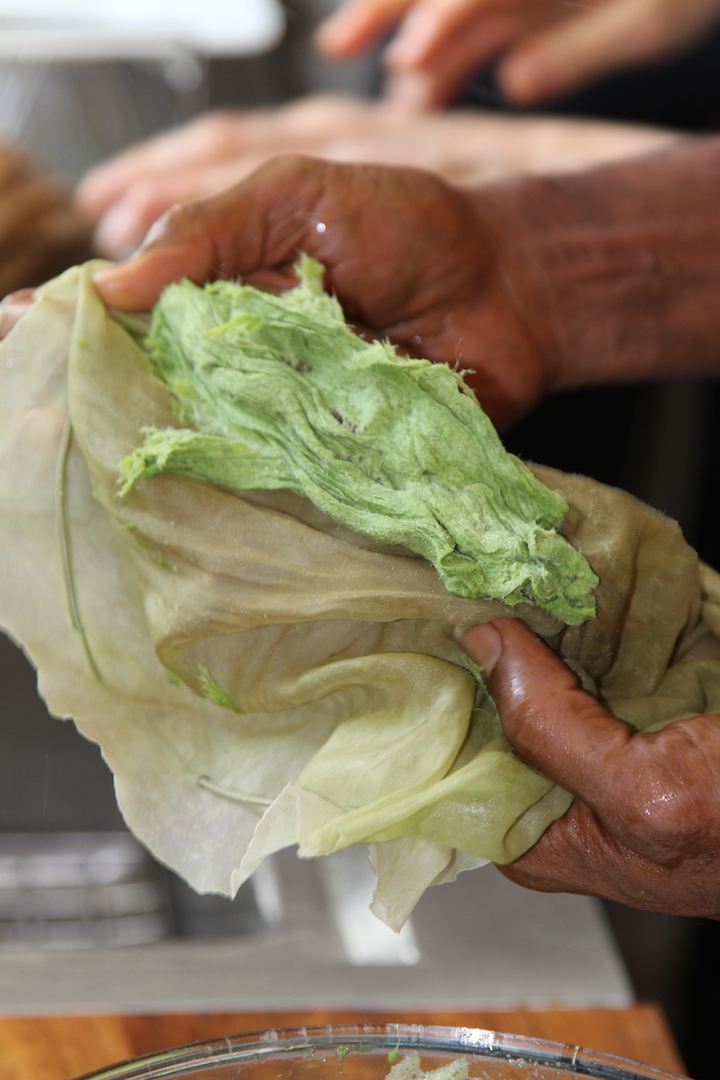
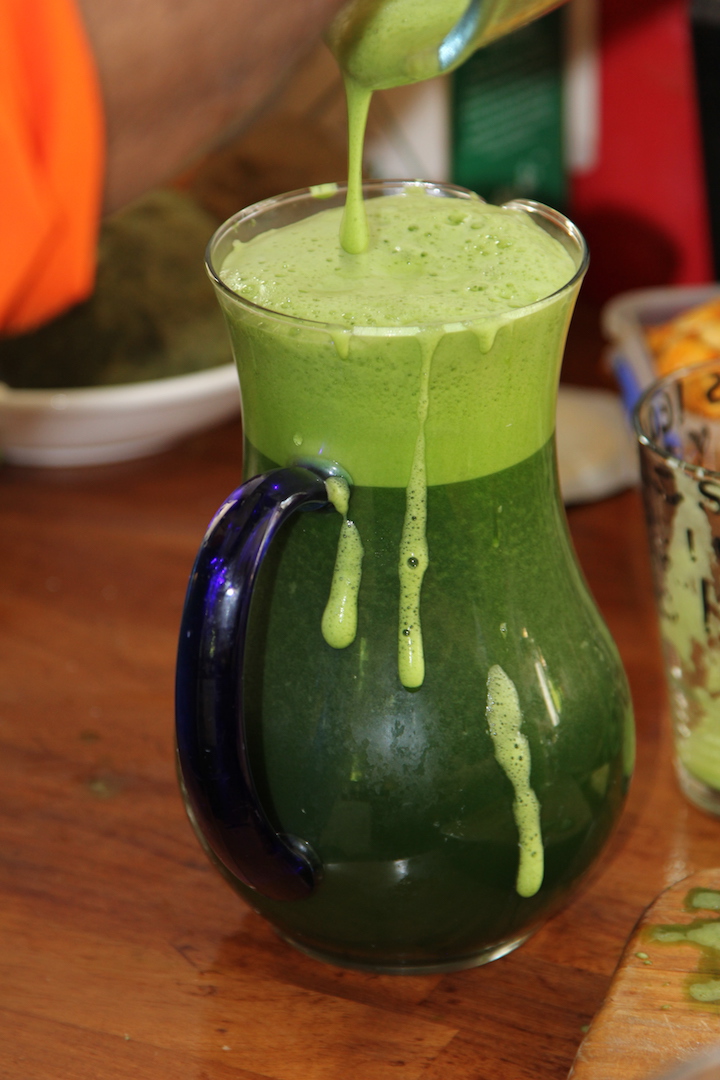
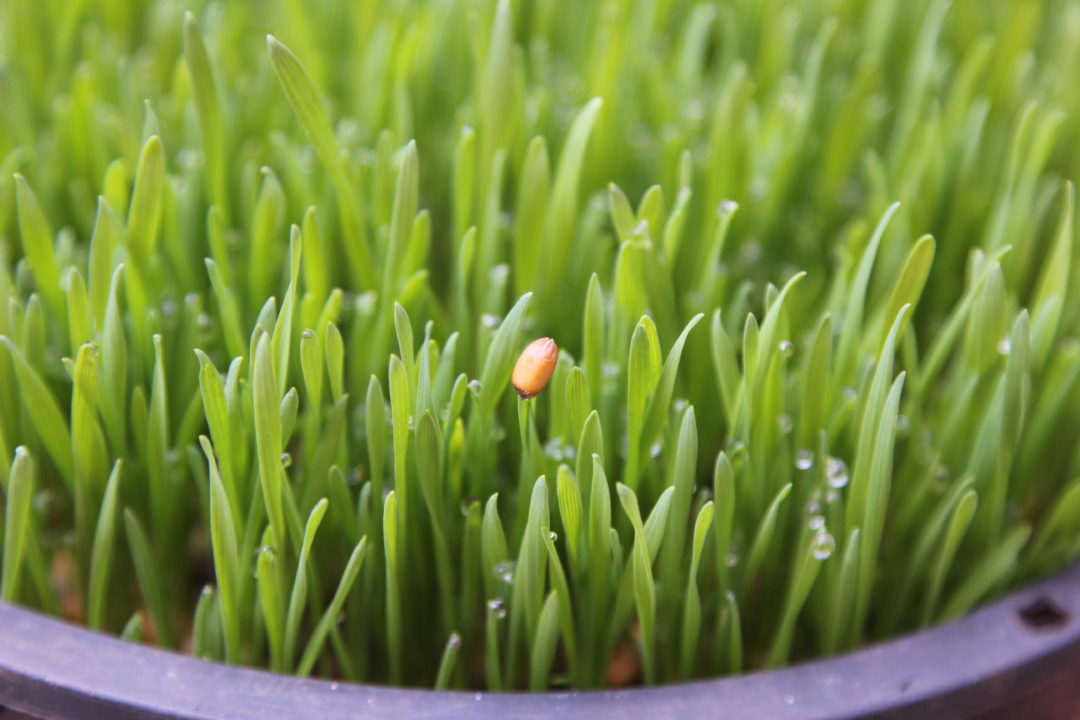
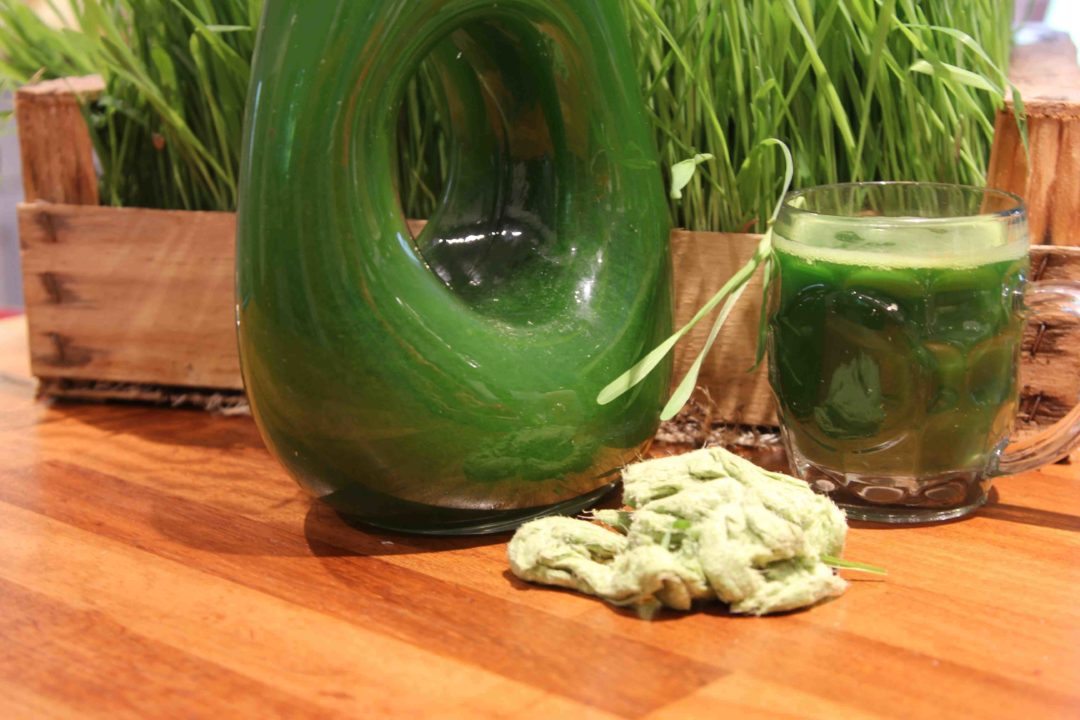
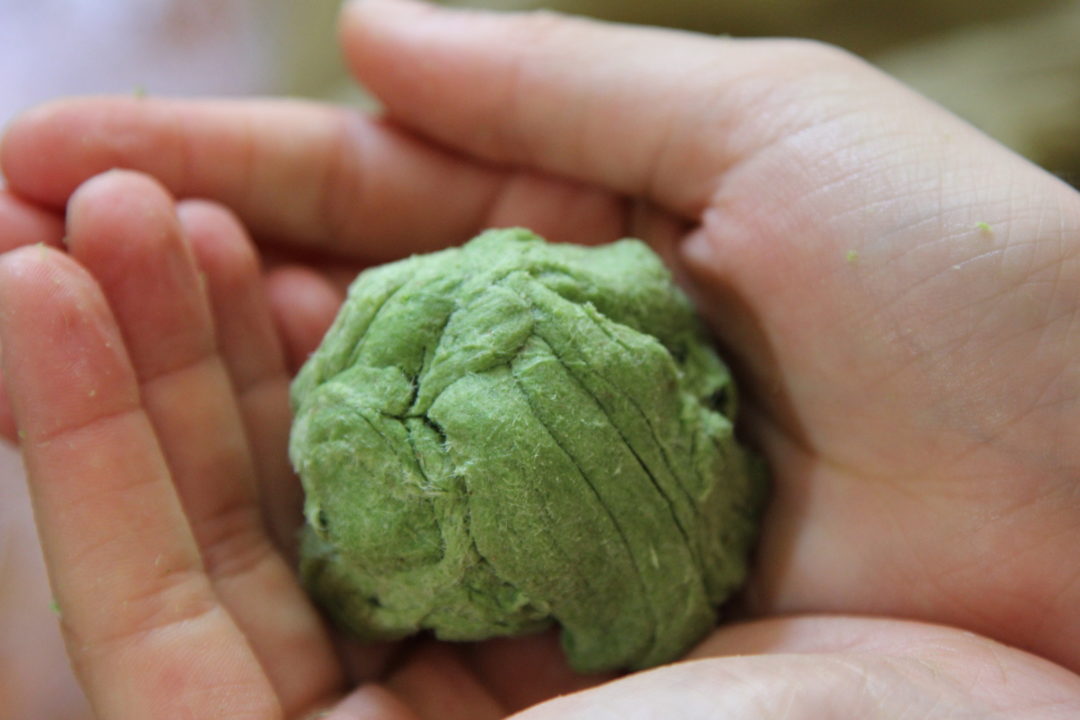
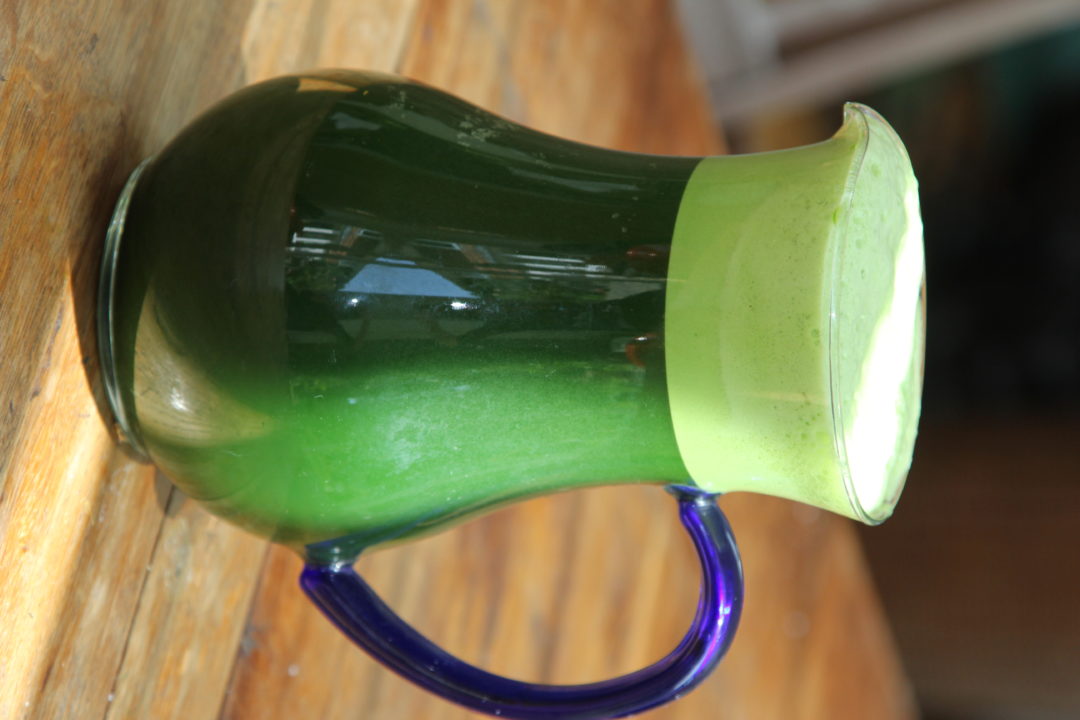
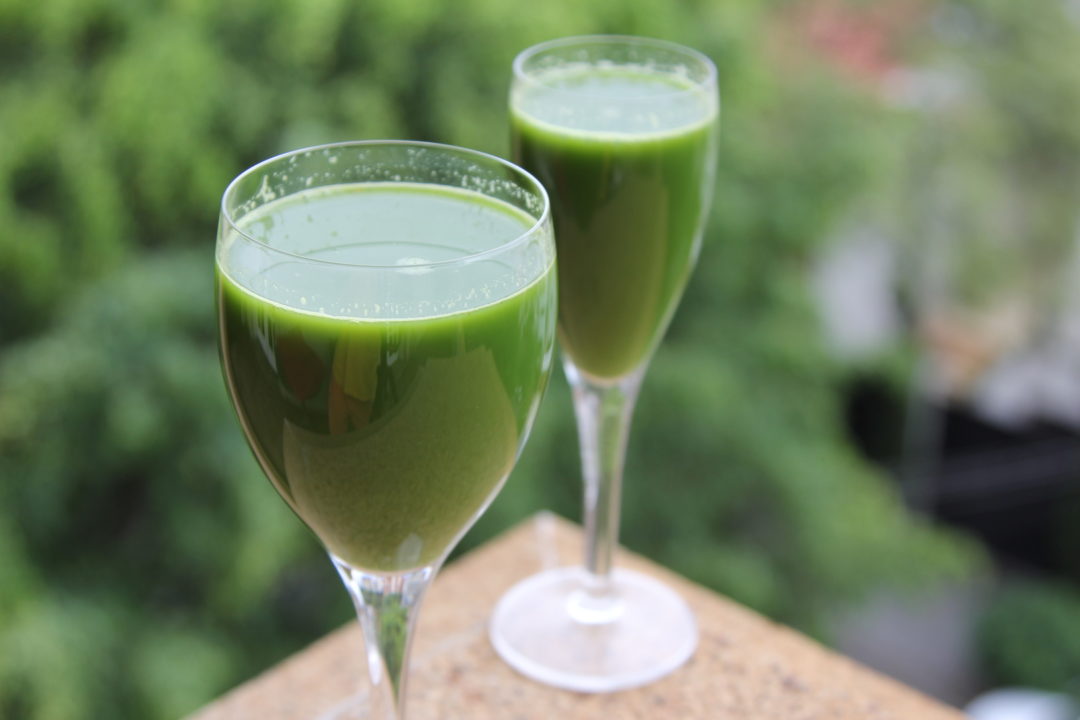
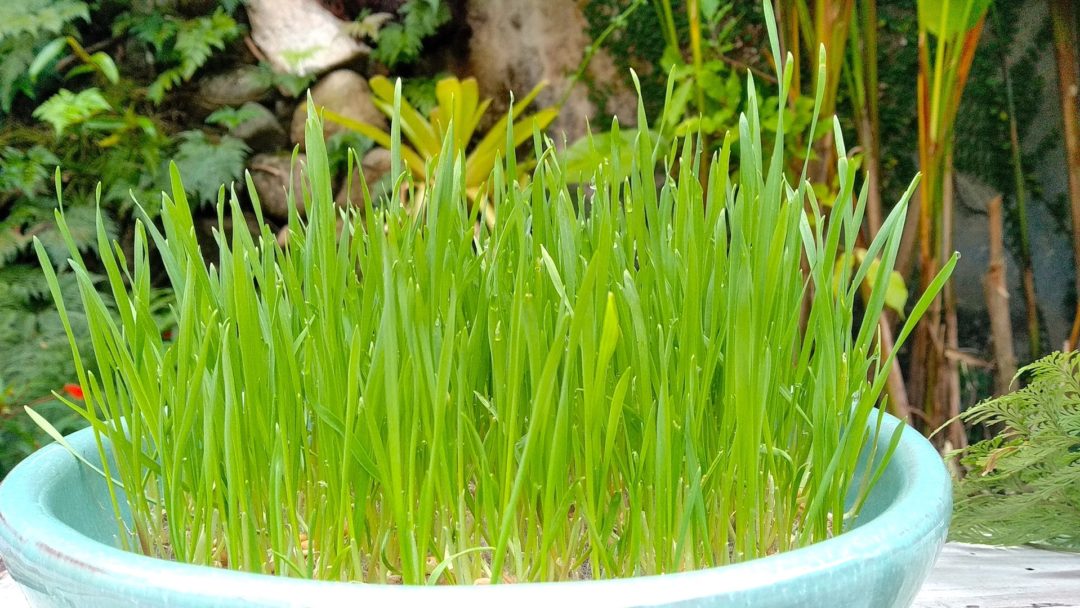
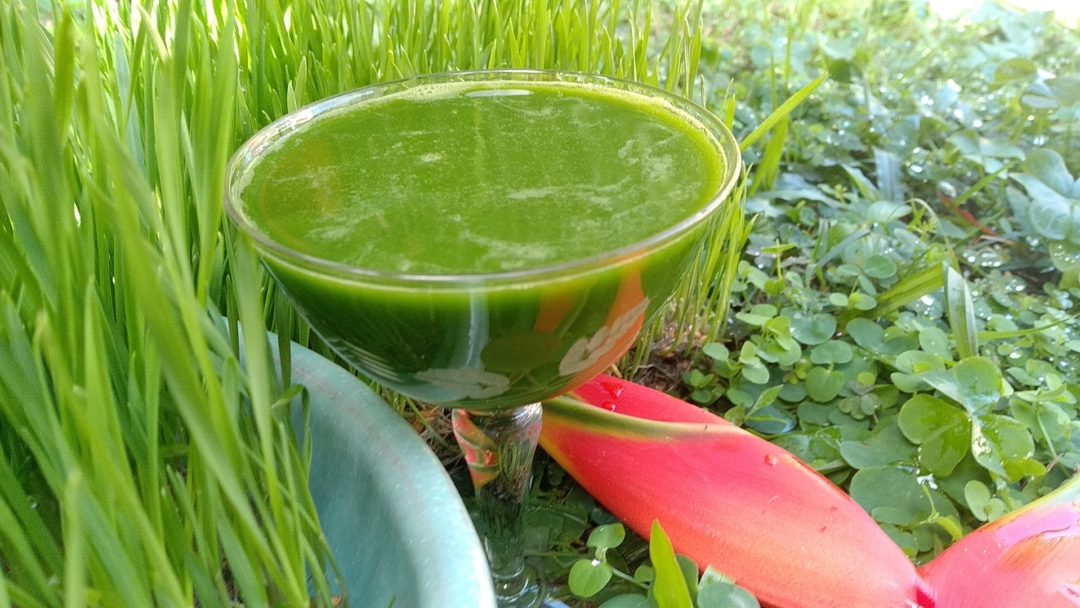
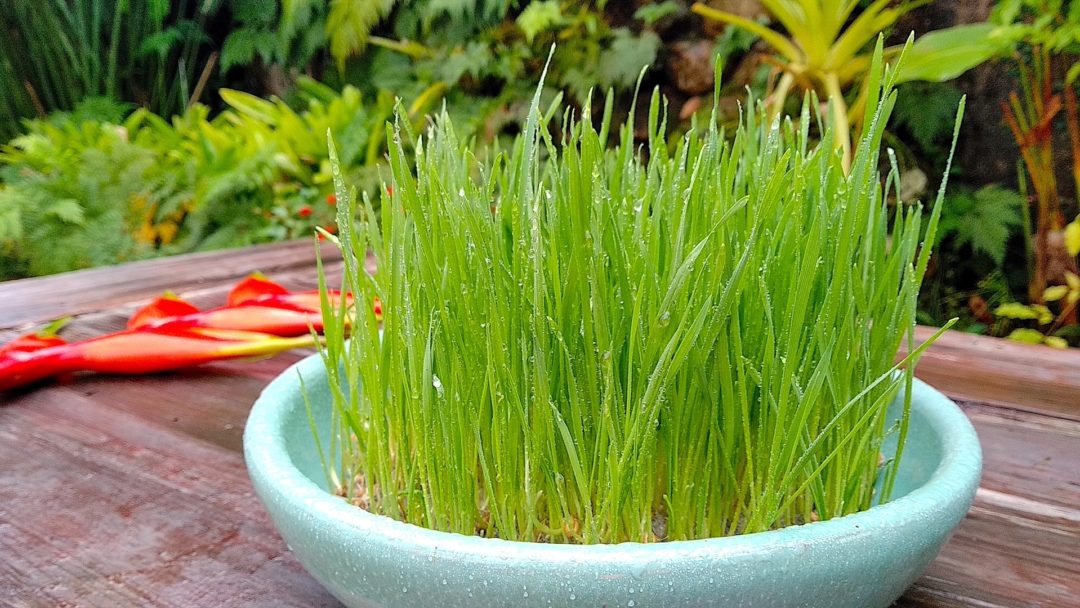
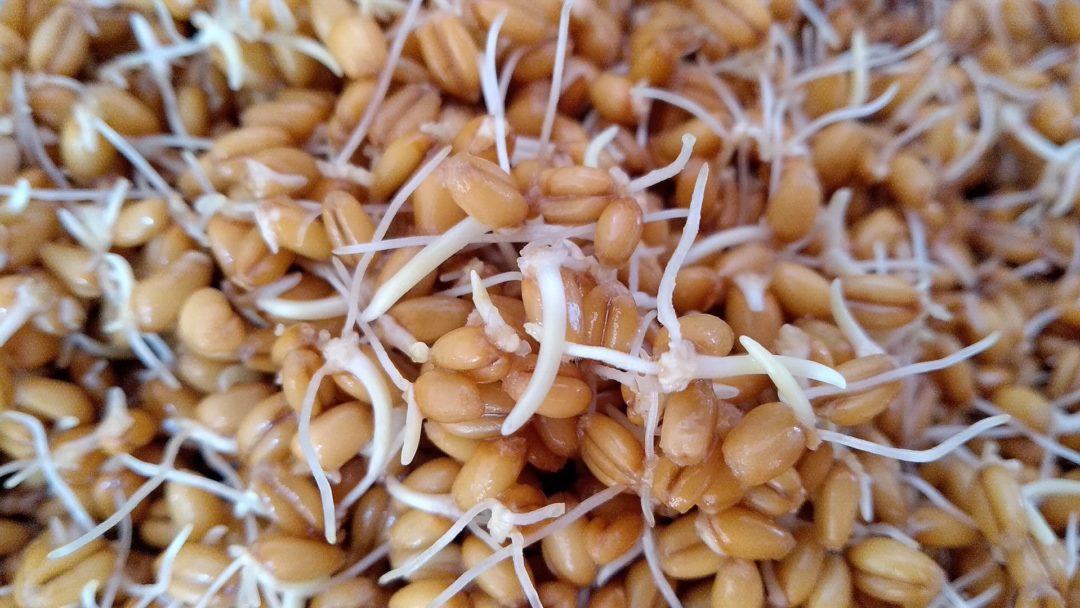
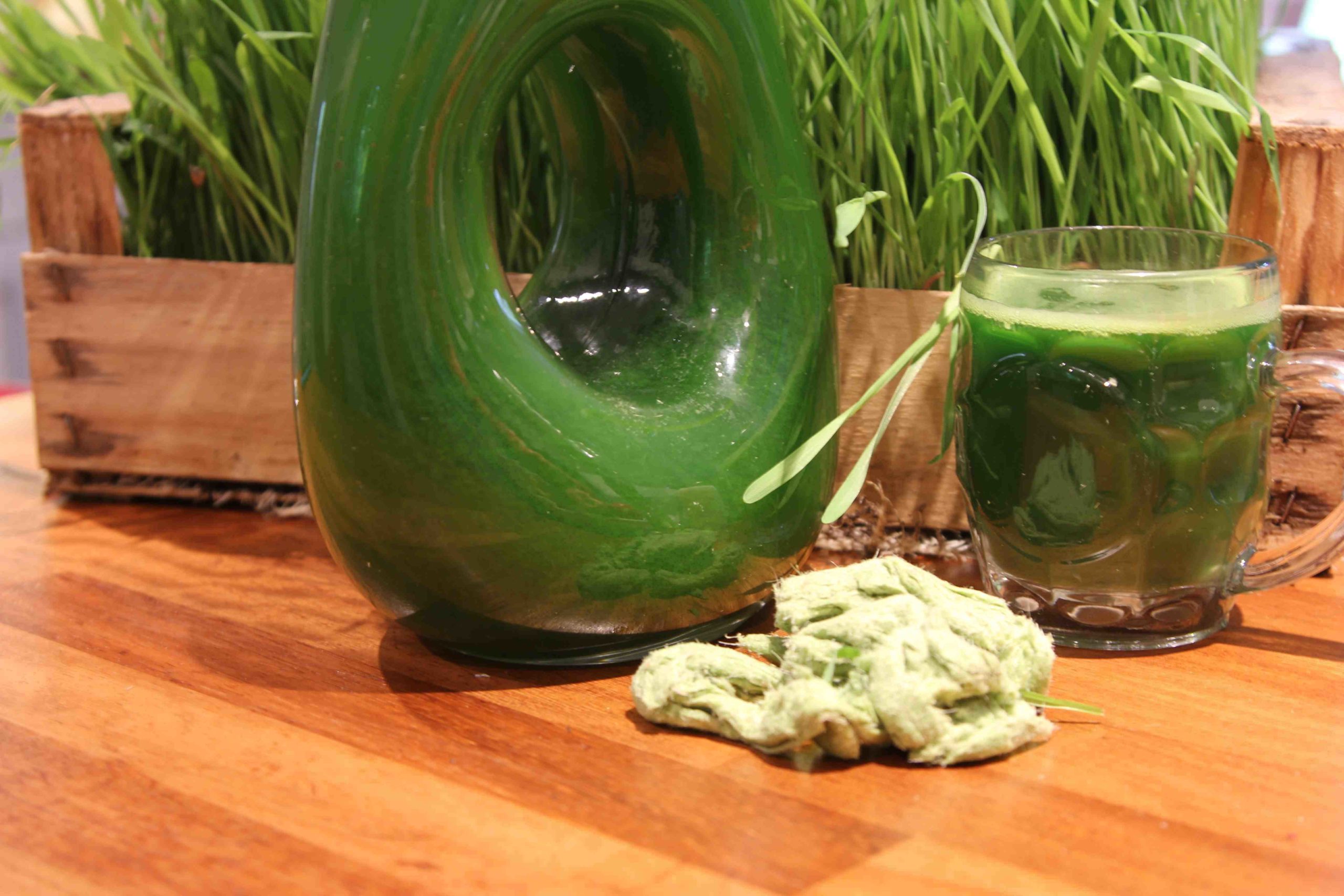
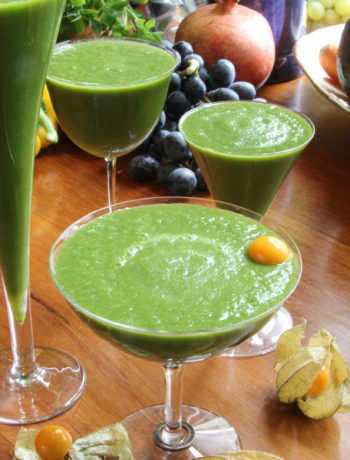
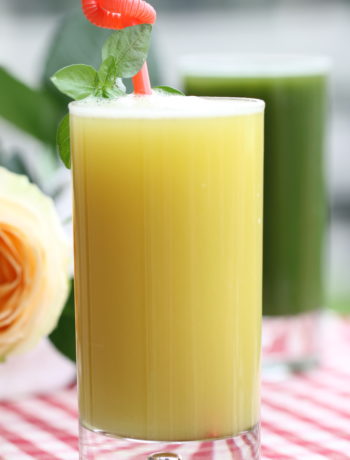
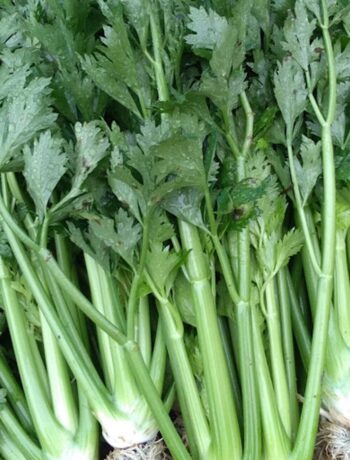
No Comments